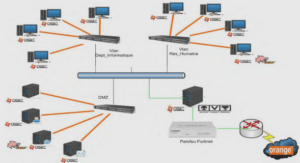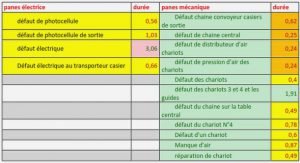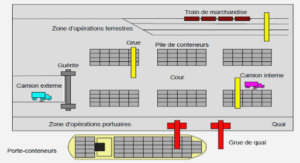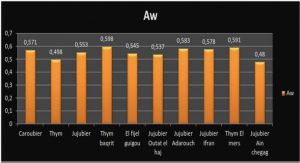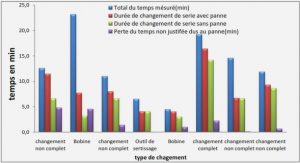Iron in aluminum alloys
Optical Microscopy (OM)
Optical microscopy (Nikon Eclipse ME600, as shown in Fig. 3.5a) was used to examine the microstructures of the experimental alloys in both as-cast and heat treated conditions. The samples were mounted and metallographically polished down to 0.05 micron diamond suspension. The image analyzer equipped with optical microscopy was used to measure the size, distribution and volume fraction of the iron-rich intermetallics.
Differential Scanning Calorimeter (DSC)
A Differential Scanning Calorimeter (DSC) (DSC, Perkin Elmer DSC 8000, as shown in Fig. 3.5b) was used to identify and confirm the solidification and the type of the iron-rich intermetallics during the solidification the heat treatment process The samples were ground about 1 mm in depth and pounced into a plate with a diameter of 3 mm. The weight of each sample is about 15-25 mg. Then the sample was loaded into a DSC chamber to perform the DSC experiments.
The heating and cooling rates were set at 10 K/min during the DSC testing. In addition, extra DSC analyses at cooling rates of 1 K/min, 5 K/min and 50 K/min were also carried out to investigate the phase selection of the iron-rich intermetallics during solidification in alloys at 0.5% Fe.
Scanning electron microscopy (SEM)
A scanning electron microscope (SEM, JSM-6480LV, as shown in Fig. 3.5c) equipped with energy-dispersive X-ray spectroscopic (EDS) facilities was used to identify the iron-rich intermetallics and quantify the alloying elements in their on-rich intermetallics.
To reveal a three-dimensional morphology of the phase constituents, some metallographic samples were deeply etched with 2.5% HF for 10 minutes. In addition, SEM was also performed to investigate the fracture surface after the tensile testing. The fracture surface was cut from the tensile testing bar with a height of 1.5cm under protection to avoid the contamination.
Electron backscatter diffraction (EBSD)
EBSD was used to further identify and confirm the types of the iron-rich intermetallics. The specimens for EBSD analysis were the same as those used in the SEM-EDS analysis. An HKL Channel 5 EBSD system equipped on the SEM (JSM-6480LV) was employed for this investigation.
Transmission electron microscopy (TEM)
Specimens for TEM observation were prepared in order to identify the iron-rich intermetallics, and measure their compositions and distribution of the elements in iron-rich intermetallics. The samples were prepared in a Focus Ion Beam (FIB) workstation in École Polytechnique de Montréal.
TEM samples were examined in a JEM-2100 electron microscope equipped with an EDS system at 200 kV, as shown in Fig. 3.5d. The selected area diffraction patterns (SADPs) were captured and indexed to confirm the iron-rich intermetallics in micro-scale.
Both the dark and bright field images were taken to study the detail in the iron-rich intermetallics. In addition, TEM-EDS was performed to measure the compositions of the iron-rich intermetallics and distribution of elements in these iron-rich intermetallics.
|
Table des matières
Abstract
Résumé
Acknowledgements
Publications
Table of contents
List of figures
List of tables
Chapter 1 Introduction
1.1 Definition of the problems
1.2 Objectives
References
Chapter 2 Literature review
2.1 Iron in aluminum alloys
2.1.1 Sources of element iron in aluminum alloys
2.1.2 Iron-rich intermetallics in Al-Cu alloys
2.1.3 Effect of iron on mechanical properties of cast aluminum alloys
2.2 Control of the detrimental effect of iron in cast alloys
2.2.1 Methods to remove the iron from melt
2.2.2 Approaches to control the detrimental effect of iron
2.2.2.1 Effect of cooling rate on iron-rich intermetallics
2.2.2.2 Effect of neutralization elements on iron-rich intermetallics
2.2.2.3 Effect of superheat on iron-rich intermetallics
2.2.2.4 Effect of heat-treatment on iron-rich intermetallics
2.3 Investigations of iron-rich intermetallics in Al-Cu 206 cast alloys
References
Chapter 3 Experimental
3.1 Experimental alloy design and sample preparation
3.1.1 Alloys for Part I: effect of alloy compositions and cooling rates on the
solidification of iron-rich intermetallics
3.1.2 Alloys forPart II: tensile property testing
3.2 Heat treatment
3.3 Microstructure observation
3.3.1 Optical Microscopy (OM)
3.3.2 DifferentialScanningCalorimeter(DSC)
3.3.3 Scanning electron microscopy (SEM)
3.3.4 Electron back scatter diffraction (EBSD)
3.3.5 Transmission electron microscopy (TEM)
3.4 Evaluation of mechanical properties-tensiletesting
References
Chapter 4 Iron-rich intermetallics in 206 cast alloys at 0.15% Fe
4.1 Introduction
4.2 Iron-rich intermetallics and solidification reactions
4.3 Effect of Mn and Si on the formation of iron-rich intermetallics
4.4 Influence of cooling rate on the formation of iron-rich intermetallics
4.5 Summary
References
Chapter 5 Iron-rich intermetallics in 206 cast alloys at 0.3% Fe
5.1 Introduction
5.2 Solidification behaviors of iron-rich intermetallics
5.2.1 Iron-rich intermetallics present in the experimental alloys
5.2.2 Solidification sequence of iron-rich intermetallic phases
5.2.3 Nucleation of iron-rich intermetallic phases
5.3 Effect of Mn and Si on the iron-rich intermetallics
5.4 Summary
References
Chapter 6 Iron-rich intermetallics in 206 cast alloys at 0.5% Fe
6.1 Introduction
6.2 Formation of AlmFe in Al-4.6Cu-0.5Fe-0.07Si 206 cast alloy
6.3 Formation of Al3Fe in Al-4.6Cu-0.5Fe-0.5Mn-0.1Si 206 cast alloy
6.3.1 Identification of iron-rich intermetallic phases
6.3.2 Solidification characteristics of iron-rich intermetallics
6.4 Phase selection of iron-rich intermetallics in 206 cast alloys at 0.5% Fe..
6.4.1 Iron-rich intermetallic phases precipitated at 12 K/min (KPM)
6.4.2 Solidification reactions and sequences of experimental alloys
6.4.3 Effect of cooling rate on phase selection of iron-rich intermetallics
6.5 Summary
References.:
Chapter 7 Mechanical properties of 206 cast alloys at various iron contents
7.1 Introduction 189
7.2 Microstructures in the as-cast and T7 conditions
7.3 Effect of iron-rich intermetallics on the tensile properties
7.4 Fracture analyses
7.5 Quality index
7.6 Prospect of high iron 206 cast alloys
7.7 Summary
References….
Chapter 8 Conclusions and future work
8.1 Conclusions
8.2 Future work
![]() Télécharger le rapport complet
Télécharger le rapport complet

